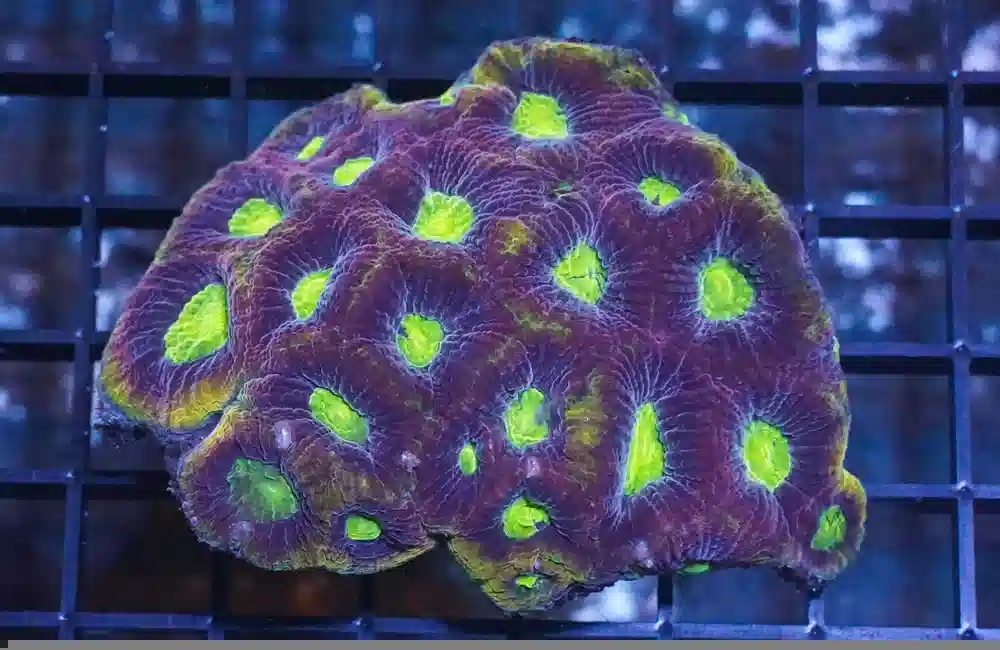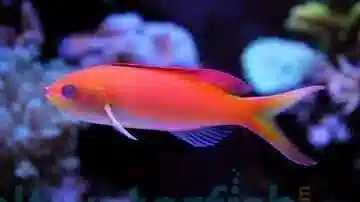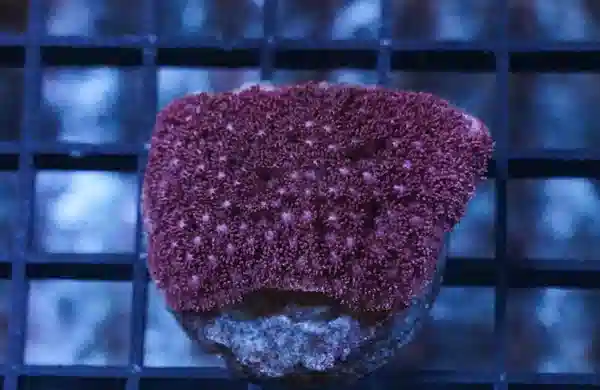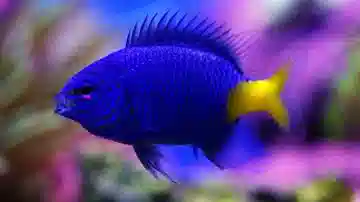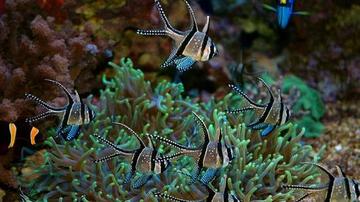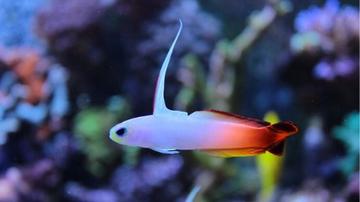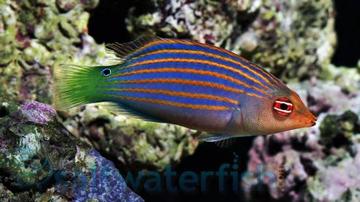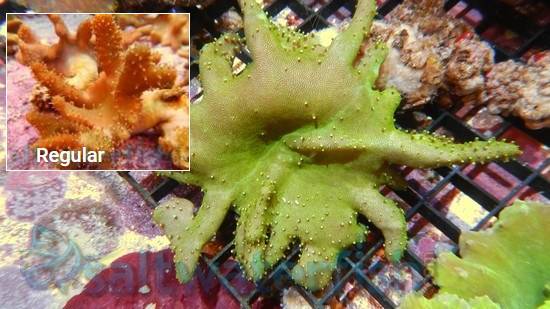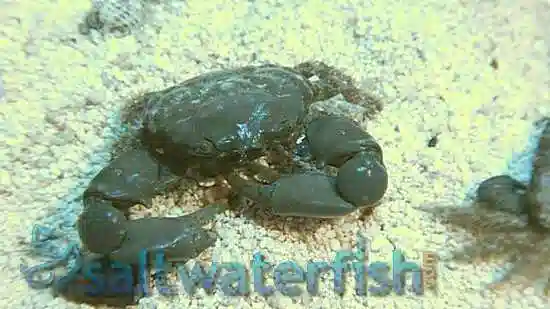Emerald Crab
Mythrax sculptus
(0 Reviews)
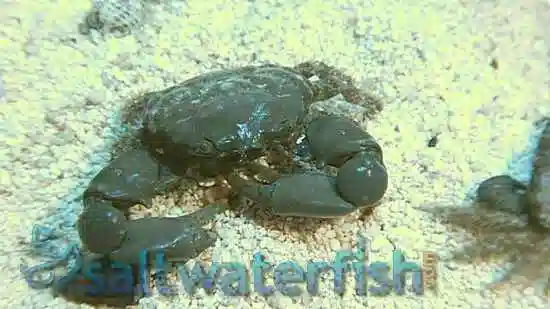
Emerald Crab
Mythrax sculptus
(0 Reviews)
{{ item.name }}
Size: {{ item.extra_field_3 }}
${{ getFormattedPrice(item.saleprice) }} ${{ getFormattedPrice(item.price) }}
To join the waiting list, click here
Free Shipping
With
$199.00
or more in Marine Life.
More details...
Emerald Crab Care Facts
| Care Level: | Easy |
|---|---|
| Temperament: | Peaceful |
| Diet: | Omnivore |
| Reef Safe: | Yes |
| Minimum Tank Size: | 15 Gallons |
| Max Size: | 2 inches |
The Emerald Crab, Mithrax sculptus, are one of the most popular marine crab species for the home aquarium. They thrive in tanks with plenty of live rock and a sandy substrate as the like to graze searching for algae. As voracious algae-eaters, they can be incredibly beneficial members of a cleanup crew. If there is not enough algae or seaweed, they can be supplementally fed with prepared meaty foods. They should, however, be fed regularly to keep them from becoming aggressive towards their tank mates. Emerald Crabs are particularly effective against bubble algae. There is a reason emerald crabs are so popular; they are very easy to care for, require almost no attention, and are effective in in controlling pesky algal blooms hence keeping the tank clean.
The Emerald Crab: A Molting Feeding Friend for Saltwater Aquariums
The Emerald Crab (Mithrax sculptus) is a delightful and eye-catching addition to saltwater aquariums. With its striking emerald-green color and unique characteristics, this crab has become a sought-after choice among marine aquarists. Let's explore the Emerald Crab's habitat, reef-safe nature, size, lifespan, diet, aquaculture potential, molting process, other common names, and compatible tank mates.
Habitat of the Emerald Crab
The Emerald Crab is native to the warm waters of the Western Atlantic Ocean, ranging from the coast of Florida to the Caribbean and Gulf of Mexico. In the wild, they inhabit rocky shores, coral reefs, and intertidal zones.
Reef Safe and Algae Control
The Emerald Crab is generally reef-safe and poses no threat to corals or other invertebrates. On the contrary, they benefit reef aquariums as they help control unwanted algae growth.
Size and Lifespan
Emerald Crabs are relatively small, typically growing up to 1.5 to 2 inches (3.8 to 5 cm) in carapace width. They can live for two to three years in a well-maintained aquarium with proper care.
Diet and Algae Eating Abilities
In their natural habitat, Emerald Crabs are omnivores, feeding on algae, detritus, and small invertebrates. In a home aquarium, they are excellent algae eaters, helping to keep the tank clean and free from excessive algae growth.
Aquaculture and Sustainability
The Emerald Crab is available in the aquarium trade, and captive-bred specimens are also accessible. Breeding and propagating this crab in captivity have been successful, making it a sustainable and eco-friendly choice for marine aquariums.
Molting Process
Like other crustaceans, Emerald Crabs undergo molting, a process where they shed their exoskeleton to grow larger. The crab is vulnerable to predation and stress during molting, so providing ample hiding spots and a secure environment is crucial.
Other Common Names
In addition to the name "Emerald Crab" or "Green Emerald Crab," this species is also known as the "Green Clinging Crab."
Compatible Tank Mates
Peaceful snail species like Astrea snails or Trochus snails can coexist with the Emerald Crab. Snails contribute to algae control, complementing the crab's role as an algae eater.
Some species of hermit crabs can be suitable tank mates for the Emerald Crab, provided they have sufficient shells to inhabit.
Peaceful blennies are also compatible tank mates. Blennies come in various colors and patterns, adding character to the tank.
Peaceful gobies can cohabit harmoniously with the Emerald Crab. Their small size and diverse range of colors make them great additions to the aquarium.
The peaceful Cleaner Shrimp (Lysmata amboinensis) can be compatible tank mates. They provide an interesting dynamic with their symbiotic cleaning behavior.
In conclusion, the Emerald Crab (Mithrax sculptus) is an enchanting and valuable addition to saltwater aquariums. Its striking appearance and algae-eating abilities make it an excellent choice for reef aquariums seeking a natural and effective algae control solution. Aquarists can enjoy the charm and practicality of these emerald-green gems in their aquatic havens by providing them with a suitable environment and compatible tank mates.
Reviewed by: Tami Curtis on April 20, 2025
Healthy and happy
Reviewed by: Brandon Atkins on March 19, 2025
Arrived, healthy, and active
Reviewed by: Paul Odonnell on Feb. 23, 2025
Still alive
Reviewed by: Katie Ellison on Feb. 23, 2025
Reviewed by: Zackary Schumacher on Feb. 20, 2025
Hardly see this one but when I do always working
Reviewed by: Steven Gibson on Feb. 3, 2025
Reviewed by: Johnny Ring on Dec. 16, 2024
Reviewed by: Robert Dozier on Oct. 6, 2024
Reviewed by: Trina Sutor on Aug. 8, 2024
Reviewed by: Richard Reedy on Aug. 8, 2024
Healthy fat and happy!
Reviewed by: Gail Nosbaum on July 22, 2024
Reviewed by: Brian Halsey on June 23, 2024
Arrived alive and well, seems to be enjoying ample live rock
Reviewed by: Josh Pritchett on June 17, 2024
Largest emerald crab I ever received
Reviewed by: Keith Blair on May 13, 2024
Did not receive and was refunded
Reviewed by: David Paige on April 1, 2024
Reviewed by: Amanda Northcutt on March 6, 2024
Reviewed by: Tracy Hedine on Jan. 2, 2024
Reviewed by: Micah Clark on Dec. 18, 2023
As advertised ????
Reviewed by: John Stone on Dec. 10, 2023
Reviewed by: Edward A Wilburn on Dec. 10, 2023
Reviewed by: Steven Bauer on Dec. 6, 2023
Very active
Reviewed by: Alvin Barbes on Dec. 4, 2023
Reviewed by: Andrew Hayes on Dec. 3, 2023
Very active going to town on algae clean up instantly
Reviewed by: Mary Fetterley on Dec. 3, 2023
Very active and alive
Reviewed by: Tony Goszulak on Nov. 8, 2023
Reviewed by: Michelle Kuhn on Oct. 29, 2023
Reviewed by: Anthony Papp on Oct. 23, 2023
Reviewed by: Jerry Duvinsky on Oct. 2, 2023
As always they do their thing
Reviewed by: Alvin Barbes on Sept. 24, 2023
Reviewed by: Fishes261@@@@ Rose on Sept. 22, 2023
I got this guy 7 days ago. He was super cool. I saw him the first day and haven’t saw him since.
Reviewed by: Lisa Davis on July 8, 2023
Reviewed by: Tim Corrie on July 3, 2023


